Shellfish: How to Introduce Your Baby to this Potentially Allergenic Food
- Why shellfish is one of the more common pediatric food allergies but one of the ones parents are least inclined to offer to babies
- How to prepare shellfish safely - mostly shrimp - in patties or fritters that babies can self-feed
- What to look out for if your baby has an allergic reaction to shellfish, keeping in mind that the reaction may occur on the second or subsequent exposure and won't always be the first time the baby tries a food like shrimp or scallops
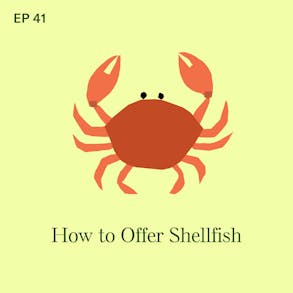
LISTEN TO THIS EPISODE
Episode Description
Shellfish is one of the Big 8 allergenic foods (...the 8 foods that account for about 90% of food allergy) and even though it is one of the more common pediatric food allergies, it’s the one that I find parents are the most hesitant about introducing to their babies. That may be because we are less inclined to be making shrimp and crab and scallops at home than some of the allergenic foods, but it’s still a category of food we should introduce to baby early and often to help prevent shellfish allergy down the road.
In this episode we’re looking at a few easy ways to introduce babies to shellfish. You can do pieces of shrimp or some of the more rubbery mollusks, but I prefer to wait until baby has at least 1 tooth and has tried some trickier textured foods out before diving right into the rubbery pieces of shellfish. Making shrimp into shrimp cakes or patties is a really easy way to offer shellfish in a baby-led weaning form that is easy and safe for babies to self-feed.

Links from this Episode
- Baby-Led Weaning with Katie Ferraro program with the 100 First Foods™ Daily Meal Plan, join here: https://babyledweaning.co/program
- Baby-Led Weaning for Beginners free online workshop with 100 First Foods™ list to all attendees, register here: https://babyledweaning.co/baby-led-weaning-for-beginners
Other Episodes Related To This Topic
- Episode 31 - Fish: How to Introduce Your Baby to This Potentially Allergenic Food
- Episode 130 - Why Benadryl is Not the Best Idea when Introducing Allergenic Foods with @raisinggoodparents Phil Boucher, MD
Resources & Research
- Gupta RS, Warren CM, Smith BM, Blumenstock JA, Jiang J, Davis MM, Nadeau KC. The Public Health Impact of Parent-Reported Childhood Food Allergies in the United States. Pediatrics 2018; 142(6):e20181235
- Gupta, RS., et al. “The prevalence, severity, and distribution of childhood food allergy in the United States.” Pediatrics, vol. 128, no. 1, 2011, pp. e9–e17. https://doi.org/10.1542/peds.2011-0204.
- Savage, Jessica, and Hugh Sampson. “Food allergy: Epidemiology and natural history.” Immunology and Allergy Clinics of North America, vol. 35, no. 1, 2015, pp. 45–59. https://doi.org/10.1016/j.iac.2014.09.004.
- Sicherer, Scott H., and Hugh A. Sampson. “Food allergy: Epidemiology, pathogenesis, diagnosis, and treatment.” Journal of Allergy and Clinical Immunology, vol. 133, no. 2, 2014, pp. 291–307. https://doi.org/10.1016/j.jaci.2013.11.020.

Latest Episodes
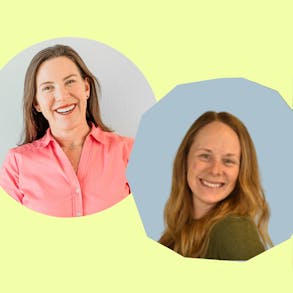
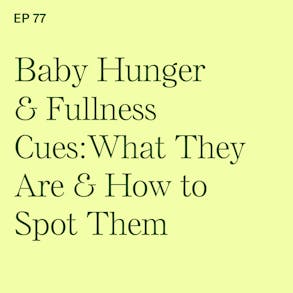
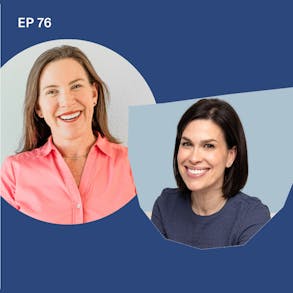
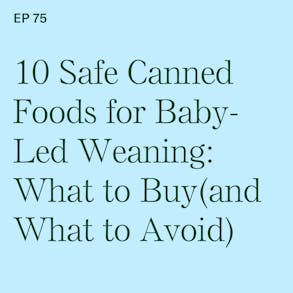
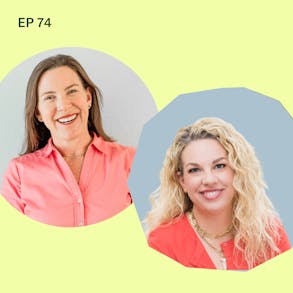
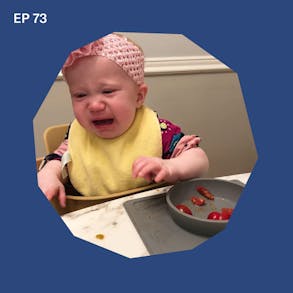
Nordstrom (1s):
Summer's here and Nordstrom has everything you need for your best dress season ever. From beach days and weddings to weekend getaways in your everyday wardrobe. Discover stylish options under a hundred dollars from tons of your favorite brands like Mango, skims, princess Polly, and Madewell. It's easy too with free shipping and free returns in-store order pickup and more. Shop today in stores online@nordstrom.com or download the Nordstrom app.
Katie Ferraro (32s):
So if you look at all of the top nine allergenic foods, right, those are the nine foods that account for about 90% of food allergy in North America. And then you look at the category of Shellfish if you're like most parents, okay, I bet if you've ranked all of the nine allergenic foods, the one you're gonna be the least inclined to do or the one you're likely gonna put off till the end is Shellfish. I'm sure for most of us it's 'cause you're not regularly cooking shrimp or crab or lobster in your home kitchen, but it's actually quite easy to make Shellfish this important, potentially allergenic food protein in a food form that is safe even for the earliest eaters to try. Hey there, I'm Katie Ferraro, Registered Dietitian, college nutrition professor and mom of seven specializing in Baby-Led Weaning.
Katie Ferraro (1m 14s):
Here on Baby-Led Weaning with Katie Ferraro podcast. I help you strip out all of the noise and nonsense about feeding, giving you the confidence and knowledge you need to give your baby a safe start to solid foods using Baby-Led Weaning. Hello and welcome back. Today we're talking about Shellfish, which is one of the top nine allergenic foods and how you can safely introduce your baby to Shellfish. Even though I know that if you had to rank all of the top nine allergenic foods, and those are the nine foods that account for about 90% of food allergy, you're probably gonna put Shellfish at the bottom of the list because if you're like most parents, sorry, but you're probably not preparing a lot of like mollusk or crustaceans in your home kitchen, right?
Katie Ferraro (1m 60s):
If we look at the top nine allergenic foods, those are peanut egg cow's, milk, tree nut, fish, Shellfish, soy, wheat, and sesame. Eh Shellfish is probably not like high priority, right? You think about like peanut and cows and milk and egg. Those are the three most common pediatric food allergies. But it is still possible for you to make very safe food-based versions of Shellfish So that your baby can get the exposure to that Shellfish protein that's the potentially allergenic part of the food. And that in turn will help lower your baby's risk of Shellfish allergy down the road. So in today's episode, we're gonna talk about How to safely prepare Shellfish because, sorry, we don't just give like a rubbery piece of shrimp from the shrimp cocktail platter to a six month old.
Katie Ferraro (2m 46s):
I'm gonna show you some different ways that you can make safe Baby-Led Weaning foods that work even in week one. If you wanted to do Shellfish as your first allergenic food, spoiler alert, it does not matter what order you introduce the allergenic foods in. We just don't do two new allergenic foods for the first time at the same time, right? Because let's say you did fish and Shellfish for the first time on the same day and the same meal and your baby had an allergic reaction, how would you know if it's the Shellfish that they're allergic to or the finfish that they're allergic to? Those are two separate allergenic food categories. So we'll go through safe preparation methods, we'll talk a little bit about Shellfish allergy, and I'll talk about what you should do if your baby does have an allergic reaction to Shellfish.
Katie Ferraro (3m 26s):
Don't forget to hit subscribe wherever you're listening to or watching this podcast from, because I'm putting out two new episodes every week. Every Monday there's a solo mini Baby-Led Weaning training that I do like this one. And then every Thursday I put out a longer interview style episode with another feeding expert. If you hit subscribe, you will get notified when both of those episodes are live. So thank you for taking the time to listen and learn here with me. If you do not yet have a copy of my 100 First Foods list, if you go to the bottom of that list, if you do have it, at the bottom is the allergenic foods section, and there's 20 of them. So there are 20 different ways to introduce the top nine allergenic foods. Hopefully that list is on your fridge. You're checking off the foods five new foods a week, including one new allergenic food every week So that by the end of week nine of starting solid foods, your baby has had all of these allergenic foods.
Katie Ferraro (4m 14s):
If you don't have a copy of that 100 First Foods list, I give it away to everybody for free on my online video workshop. It's called Baby-Led Weaning for Beginners. It's just over an hour, but I'm gonna walk you through everything you need to know to give your baby a safe start to solid foods. And at the end of that workshop, I'll tell you how to download the 100 First Foods list. You can sign up for that free workshop. It's babyledweaning.co/workshop. So we're gonna get started talking a little bit about Shellfish. I mentioned that Shellfish is separate from Finfish, so there's nine different allergenic foods. I ran through them earlier. So those top nine allergenic foods, they account for about 90% of food allergy in North America, and today's focus is on Shellfish.
Katie Ferraro (4m 58s):
So when it comes to Shellfish, there are two types of shellfish. There's crustacean like lobster and crab and shrimp. Those tend to cause most of the Shellfish reactions. They tend to be more severe than the reactions from mollusks. So mollusks are the Shellfish things like clams, mussels, oysters, and scallop. And actually if you have a Shellfish allergy, not all people react to both. One study showed that there was about a 14% cross reactivity between crustacean and mollusk allergies. Now, Shellfish is a little bit different than some of the other potentially allergenic foods that we've talked about on the podcast, and that's because about 60% of Shellfish reaction first occurs in adults. So we talked about foods like, you know, egg and milk and peanut, and those tend to be more common in the pediatric population.
Katie Ferraro (5m 45s):
Well, many of you listening probably know of an adult who had an allergic reaction to Shellfish for the first time as an adult. Again, about 60% of Shellfish reaction first occurs in adults. Shellfish tends to be a lifelong allergy. So if you compare that to things like peanut and tree nut Shellfish as well, he's not one of those allergies that if you had it as a young person, you're necessarily going to outgrow it. So it's more of a lifelong food allergy. But as far as Shellfish allergy prevalence data goes in children, it's thought that Shellfish allergy affects somewhere between one half of a percent to 2% of children in the us In adults, the prevalence is higher, it's about two to 3%.
Katie Ferraro (6m 26s):
So it is one of the more common adult food allergies. And when it comes to the actual introduction of Shellfish, how do we know when is a good time to do that? Well, the general food allergen in introduction guidelines today, this is based on updated standards and research and recommendations from professional health bodies on an international basis. The majority of guidelines at this point, point to early introduction and what the guidelines say is to introduce these potentially allergenic foods early and often. But what does early mean? Early means when your baby is safe to start eating something other than infant milk. So once your baby hits that six month mark or six month adjusted mark if they were born prematurely, and also when they're showing you the other reliable signs of readiness to eat, then when you're starting finger foods, you also want to be incorporating the allergenic foods.
Katie Ferraro (7m 14s):
So we generally start solid foods around the six month mark, although noting that not all babies are really ready to start right at six months of age, but what that early and often recommendation means is we don't wait until after the baby is one. Okay, before we start introducing allergenic foods, in fact, the American Academy of Pediatrics no longer recommends waiting or delaying the introduction of allergenic foods. They used to, okay, about 20 years ago. That was the general guidance, oh, hold off on introducing these allergenic foods. But now more research has shown us that, wait a minute, it's actually the earlier introduction of those allergenic food proteins into the system that helps prevent food allergies down the road.
Katie Ferraro (7m 55s):
Hey, we're gonna take a quick break, but I'll be right back.
KiwiCo (7m 58s):
How are you doing with your summer stress level? I know my kids are out of school, and while I love these longer days with less structure, they are long days with less structure. Thankfully, this year I've come prepared with my summer sidekick Kiwi co. Kiwi co develops hands on projects and activities for kids of all ages, and they are my summer savior with the Kiwi Co Summer Adventure Series with the Summer Adventure Series, Kiwi co delivers awesome science and art projects where kids receive six hands on project kits over six weeks with enriching content and fun activities to accompany each project. So you can stop that summer slide before it even starts with engaging projects like the archery set where kids build their own bow, helping to turn the outdoors into a playground of learning and fun. I know how hard it really can be to keep your kiddos engaged and busy and challenged during these lazy days of summer. And for sure, yes, we should be relaxing. But if you are down for a little, little summer structure with projects that you'll enjoy working on as much as your kids do, go check out Kiwi Co. You can get started building the best summer ever with Kiwi Co and get $15 off your summer adventure series at kiwico.com/weaning. That's $15 off your summer adventure kit at kiwico.com/weaning.
Katie Ferraro (9m 29s):
As far as how much of the potentially allergenic protein is needed, that data is not yet known. You will see food companies and supplement brands that will try to tell you that they have, you know, the perfect dose of Shellfish protein and all the other allergenic proteins, which side note they usually mix altogether, which is absolutely asinine because if your baby had an allergic reaction to one of those food proteins, how would you know which one they were allergic to if they were all combined together? So your baby certainly does not need supplements or powders or mix-ins. Your baby can learn how to eat food-based versions of these different allergenic foods, right? Because children learn how to eat food by offering them real food. And yes, you can incorporate Shellfish, but how much should your baby eat?
Katie Ferraro (10m 10s):
Well, that's not entirely known yet. One thing we do know, however, is that one taste is not enough. You don't just offer a shrimp cake once and your baby has a nibble and you're like, cool, not allergic to shrimp. The key is to offer these foods early and often and often means more than once. And that's because if your baby is going to have an allergic reaction to a food like Shellfish, the reaction is very unlikely to occur on the first time they eat it, okay? It will be on the second or the subsequent exposure. And as far as the timing goes, there's absolutely no reason to wait three to five days between offering new foods. Okay? A lot of times you'll hear that recommendation, oh wait, three to five days in case your baby has an allergic reaction so you can observe it. The reality is that if your baby is going to have an allergic reaction to food, the vast majority of those reactions will occur within minutes and up to no more than two hours following ingestion.
Katie Ferraro (10m 57s):
So it's not like you're going to offer your baby a crab cake and then four days later they're gonna have a weird diaper and you're like, oh my gosh, they're allergic to Shellfish. No. Okay. The vast majority of allergic reactions will occur within minutes and up to no more than two hours following ingestion. So I would encourage you to monitor your baby for two hours following the bites of Shellfish that they're eating, but then after that, you can let 'em go to sleep or do their thing because they're very unlikely to have an allergic reaction. Now, as far as the timing of the introduction of these allergenic foods, I mentioned that one taste is not enough. In my Baby-Led Weaning Program, families follow our five step feeding framework. So this is an approach whereby we introduce five new foods a week. You do a new fruit on Monday, a new vegetable on Tuesday, you do a starchy food on Wednesday, a protein on Thursday, and an allergenic food on Friday.
Katie Ferraro (11m 41s):
So if you have the a hundred First Foods list, you'll see that it's organized 20 fruits, 20 vegetables, 20 starchy foods, 20 proteins, and then 20 allergenic foods. Five times 20 is a hundred foods. You do five new foods a week, that's 20 foods a month. In five short months, your baby has safely eaten a hundred different foods with Baby-Led Weaning, and you've knocked out all of those allergenic foods. So when it comes to Friday each week, starting in week one, you offer an allergenic food. And if you wanted to start with Shellfish, we have recipes for phase one. So that's the first eight weeks of Baby-Led Weaning on how to make Shellfish safe inside of the program. So parents will pop in there, go to the allergenic foods, go down, you know, to crab or to shrimp, or to lobster if you want, and then tap in there and see the videos, look at the recipes, and decide which of those Shellfish recipes you want to make for your baby.
Katie Ferraro (12m 29s):
Now, do you offer just once? No, we do that allergenic food twice on Friday. We do it twice on Saturday and twice on Sunday. So by the end of the weekend, your baby has had Shellfish six different times, no other new foods across the weekend while we're observing for any potential Shellfish reaction, remember, for two hours following the ingestion each time, but end of that week, hey, your baby had Shellfish six times. You're pretty sure they're not allergic to Shellfish, and you can go right back on the following Monday to starting another five foods that next Friday you'll do a new allergenic food. The goal is to get all the allergenic foods in. Research shows us that the protective window for preventing food allergy closes around the 11 month mark. So in order to be extra careful, we get our parents through all nine of the allergenic foods in the first nine weeks of the program.
Katie Ferraro (13m 10s):
So it's a 20 week meal plan to help your baby eat a hundred different foods. If you wanna check that program out, it's called Baby-Led Weaning with Katie Ferraro. If you go to babyledweaning.co/program, you can see all of the things that includes, but the 100 First Foods Daily Meal Plan, which at this point most of our families are following, they're like, Katie, I do not want to pick out the five foods each week that my baby eats. If you do wanna pick those five foods out, I've got a whole 100 First Foods content library with all those videos and recipes and instructions that show you how to make each of the a hundred foods safe for your baby's agent stage. But there's also a 100 First Foods Daily Meal Plan that you can follow, where I'll tell you every day, five days a week, which foods to make your for your baby for the first meal, for the second meal.
Katie Ferraro (13m 52s):
Later on in the program, we move to three meals, but it also has that allergen introduction maintenance plan for the weekends as well. Again, the website is babyledweaning.co/program if you want to check it out. Now, how do you actually prepare Shellfish to be safe for that early eater? Let's say you have a six, seven, or eight month old baby who they don't have their pencil grasp yet. They can't pick up small pieces of food, so you can't just offer like, you know, shredded canned crab to them, for example, because they're not gonna be able to pick it up and feed it to themselves. Okay? As I mentioned in our program, we have phase one recipes. So those are finger foods that are safe for babies in the first eight weeks of starting solid foods for them to eat. We can pick 'em up and feed it to themselves. So we've got a shrimp and avocado puree.
Katie Ferraro (14m 34s):
If you'd like to do purees, you can offer that off of a pre-loaded spoon. Also, got a shrimp cake with aioli dipping sauce recipe, got a shrimp ceviche recipe. Actually, there's a mom and art program who's from Peru who shared her family's recipe. That was how she had introduced her baby to shrimp, and it's a really fun one for families to try. Very flavorful, have a shrimpy corn cakes recipe, a lot of different ways to make shrimp safe for your baby. One of my favorite ways to do shrimp though is to make a shrimp cake. It's kind of like a crab cake if you think about it. Now, this is not ideal if you're doing it in week one because this recipe also contains wheat and egg. Those are two of the other potentially allergenic foods. But once your baby is passed egg, and once they've passed wheat and you know they don't have an allergy to those two foods, then it's perfectly fine to try this recipe.
Katie Ferraro (15m 19s):
And it's basically like making a crab cake, but using shrimp that you pulse in your food processor, chop up in the blender or very finely with your knife if you'd like to. I generally use Panko, which are Japanese style breadcrumbs because they're lower in sodium than our traditional breadcrumbs. The egg kind of binds and holds everything together So that when you fry the patties, it all sticks together. And then when you're done frying them, you cool 'em, and then you cut the patties into strips about the size of your adult pinky finger. That's the perfect size that your baby can use their whole hand or their Palmer grasp to rake and scoop that food up and out of the suction mat herbal and feed it to themselves. Now, shrimp of course, is not the only type of Shellfish that's out there.
Katie Ferraro (15m 60s):
You also can do crab. I love, as I mentioned, crab cakes. You can do boiled or steamed crab. We actually even have recipes utilizing canned crabs since of course, you're not always gonna be out getting your own fresh crab meat. We have a crab salad recipe. The crab cakes recipe is kind of a variation on the shrimp cakes, but we do do a lot of fritters for Baby-Led Weaning, kind of like fried cakes that you then, again, cut into pieces about the size of your adult pinky finger to make it safe for the baby to pick up and feed to themselves. And one of my favorite foods from the entire a 100 First Foods list is another type of Shellfish, and that's lobster. You get some pushback from parents, they're like, oh my gosh, I can't believe I'm feeding my baby lobster. But a lot of families will save lobster till their hundredth food.
Katie Ferraro (16m 41s):
So I have families that come to my house and we do parent coaching with babies, helping them through the 100 First Foods program, and I always offer to host their 100 First Foods party, and a lot of times we end up making lobster for them a, because it's a little bit more on the pricier side. So it's definitely a sometimes food. We have a lobster tails with garlic, lemon butter recipe that everyone in the family loves. But it's just so fun to watch the babies kind of dig into lobster to celebrate their hundredth first food celebration, right? Because we should be celebrating all of the foods that our babies can eat. 'Cause Babies can eat so many more foods than we give them credit for. A lot of times it's just about knowing which food to make and how to make it safely for your baby's age and stage.
Katie Ferraro (17m 22s):
So again, if you'd like to learn more about how to make all those different types of shellfish safe for your baby, check out the program, babyledweaning.co/program. I will put the links and the references for today's episode inside of the show notes, which you can find at blwpodcast.com/41, a special thank you to our partners at AirWave Media. If you like podcasts that feature food and science and using your brain, check out some of the podcasts from AirWave. We are online at blwpodcast.com. Thanks so much for listening, and I'll see you next time.
Verify Skincare (18m 5s):
Sick of face serums that promise the world and deliver nothing. Meet power. Trip by verify skincare. Say goodbye to dullness, blackheads, and fine lines. This biotech powered serum with lactic acid fruit, aha, and phyto. Phx doesn't just exfoliate it. Hydrates, smooths and visibly transforms your skin because when it comes to skincare results, speak louder than hype. Try power Tripp today. Visit us online at verifyskincare.com and enjoy free gifts with purchase verify skincare, clean, proven, and unapologetically effective.

The Program Baby-Led Weaning with Katie Ferraro
A step-by-step digital program for starting solid foods safely and navigating the original 100 FIRST FOODS™ meal plan with baby-led weaning.
 EXPERT-LED, PROVEN APPROACH TO EATING REAL FOOD
EXPERT-LED, PROVEN APPROACH TO EATING REAL FOOD CONCISE VIDEO TRAININGS TO MASTER BABY-LED WEANING
CONCISE VIDEO TRAININGS TO MASTER BABY-LED WEANING 100 FIRST FOODS DAILY MEAL PLAN WITH FOOD PREP VIDEOS
100 FIRST FOODS DAILY MEAL PLAN WITH FOOD PREP VIDEOS
Baby-Led Weaning for Beginners Free Workshop
Is your baby ready to start solid foods, but you’re not sure where to start? Get ready to give your baby a solid foundation to a lifetime of loving real food…even if you’re feeling overwhelmed or confused about this next stage of infant feeding.
Get baby-led weaning recipes and tips delivered to your email inbox.

